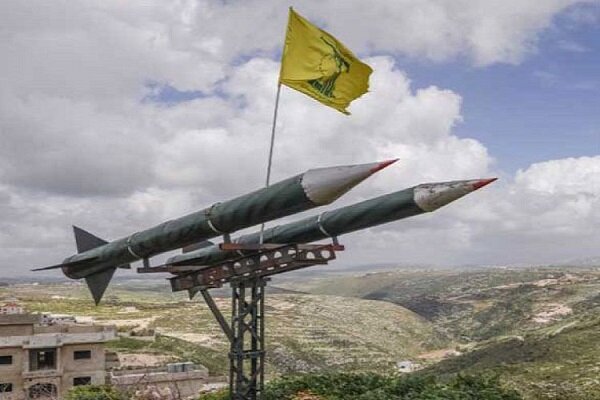Demonstrating the power of Hezbollah and discrediting the military and intelligence power of Tel Aviv

Mehr News Agency, international group: the Zionist regime is following the start The invasion of the Gaza Strip, in the north of the occupied Palestinian territories, is under the continuous attacks of the Lebanese Hezbollah. The war on the Lebanese border has been going on for eight months since October 8, 2023, between the Zionist army and the resistance forces. These attacks, the number of which has reached more than two thousand, many positions and soldiers of the Zionist regime have been hit by Hezbollah missiles. Although the Zionist regime has responded by assassinating resistance commanders and threatening a large-scale war in Lebanon, the creation of a high level of insecurity in the region has made the Zionist regime’s ability to respond to these attacks a major challenge.
Hezbollah attacks on the positions of the Zionist regime
One day after the start of Al-Aqsa storm operation, on October 8, 2023, the Lebanese Hezbollah movement as part of the axis of resistance started its attacks against the positions of the Zionist army. . At first, these attacks were mostly focused on targeting army units, border surveillance posts, the Zionist regime’s listening centers near the Lebanese border, and such targets. But in the future, large targets deep in the northern cities in Haifa and Ashdod were also targeted. .
Hizbollah targeted 105 military sites and succeeded in destroying 69 communication systems, 140 surveillance cameras and 17 jamming systems. Hezbollah forces were also able 33 radar and 27 Destroy the information system and shoot down a drone. As a result of the resistance operation, 28 towns were evacuated and about 80 “background-color:white”> One thousand settlers were displaced inside the occupied Palestine. While several Zionist soldiers were killed in these attacks, These attacks have also caused widespread fires in the Zionist settlements on the border of Lebanon, killing and wounding a number of soldiers and civilians in the settlements and shutting down many industries, factories and agricultural fields in the occupied territories.
Increasing Hezbollah’s offensive power from April 2024
As the report of the CSIS think tank shows, in general, Hezbollah’s strategy against the Zionist enemy is to use rockets as offensive weapons along with light infantry and anti-armor units for defense. from its positions in the south of Lebanon. In this war, the level of confrontation and tension between Hezbollah and the Zionist regime has started to increase after nearly two decades of low-level conflict. In the current war, Hezbollah also uses point-blank weapons, including anti-tank missiles and other types of missiles in the Barkan and Falaq class and other types It used remote drones that allowed its forces to target enemy border bases from close range.
The officials of the Zionist army admit that the Hezbollah rockets for effect are desirable, from a distance of 5 to 8 Kilometers are fired at the targets. However, Hizbollah has always not raised its attack above a certain level due to the prevention of suffering human losses. On the other hand, after a few months of this war, which was accompanied by the martyrdom of some Hezbollah forces, this group has made changes in its tactics in facing the Zionist regime. Most of Hezbollah’s forces are from Rezvan’s forces, which are considered the special forces of this group. In this framework, Hezbollah has deployed its forces at distances of 20-30 kilometers from the border with Zionist settlements to prevent further human casualties.
Faisal Abdol Sater The Lebanese political analyst believes that Hezbollah’s attacks from October 2023 to March 2024 are mostly aimed at conveying a specific message to the Israeli enemy, which is that these attacks are only a part of what we have. And if needed, we can hit more.”
However, it seems that after Iran’s combined missile and drone attack on the regime positions Zionism in the occupied territories, the type of attacks by Hezbollah has changed and this resistance group has increased the use of drones and missile attacks against the Zionist regime. Hezbollah’s use of drones capable of firing missiles, explosive drones and the small version of the famous guided missile Almas has sounded the alarm in the Israeli army, as the spokesman of the Israeli army stated that Hezbollah has intensified the situation in the north and is constantly increasing its attacks. While reducing the number of forces along the border areas, Hezbollah has warned that if the attacks of the Zionist regime on Rafah increase, it will attack the northern areas. makes it wider.
Israel’s ability to respond to Hezbollah attacks
As Hezbollah has increased the level of attacks and is trying to establish a balance with the emerging Zionist regime, the Zionist army has also placed one of its main operations fronts on the northern borders with Lebanon and It faces serious problems within its framework.
The assassination of Hezbollah commanders
The assassination of the commanders is in the framework of the idea of restoring the deterrence of the Zionist regime. Deterrence against Hezbollah means that the threat of war, including the potential destruction of parts of Lebanon and punitive attacks on Lebanese infrastructure, will prevent this group from attacking, or at least large-scale attacks on, the positions of the Zionist regime. One aspect of this approach is the assassination of Hezbollah commanders. The main foundation of the Dagan doctrine in the Zionist army is also based on the same premise that in order to succeed in the war, one must first destroy the enemy’s leaders and field commanders. This approach can be seen in the assassination of commanders such as Hussein Ali Azqul and Ismail Youssef in southern Lebanon.
Increasing attacks on civilians
Another of Israel’s measures to counter Hezbollah is under the effect of putting the lives of civilians in The border is Lebanon. After Hizbollah’s attacks on the occupied territories, the occupying regime also targeted locations in Lebanon. In this move, Israel is counting on the internal conflicts, constant instability and growing economic problems of Lebanon. Regular Israeli airstrikes on residential areas along the Lebanese border have displaced more than 75,000 people from southern Lebanon. Through these attacks, the Zionist regime is trying to show that the government is actively trying to defend them, and on the other hand, the work of Hezbollah. making it difficult to assemble forces that might launch a surprise attack across the border.
threat of widespread war
In the past months, the leaders of the occupying regime have threatened Hezbollah with an all-out war. Among other things, Netanyahu stated in December 2023 that “if Hezbollah decides to start an all-out war, then it will single-handedly take Beirut and southern Lebanon, not far from here, to Gaza and Harzi Halvi, the chief of staff of the Zionist regime, also told the Zionist soldiers that the possibility of war against Hezbollah is increasing. Netanyahu also stated during his visit to the border region with Lebanon on June 5, 2024: “Anyone who thinks they can hurt us is making a big mistake. We are ready for very strong action in the north and we will restore security to the north by any means.”
The logic of the Zionist regime is that war with Hezbollah is inevitable at some point and Tel Aviv should not wait for a surprise attack. The main goal of the leaders of the Zionist regime in threatening war is probably to prevent another 7th of October from happening again. For this reason, the intelligence agencies of the Israeli regime always claim to continuously monitor Hezbollah’s missile sites and drone At the same time, part of the reason why Hamas succeeded in surprising the Israeli regime in October 2023 is due to the fact that the Zionist regime was more focused on Hezbollah and saw it as a bigger threat.
Result
Since the beginning of Hezbollah’s operations in the northern borders, this group has shown a high ability to target the positions of the Zionist regime and actually formed a basic front against Tel Avio is open in the north of the occupied territories. The field reality indicates that the Zionist regime has not been able to establish security, which is the rarest commodity in the occupied territories, in the northern regions, because on the one hand, more than 80,000 Zionist settlers have been forced to relocate, and on the other hand, 100,000 military forces of the regime The occupiers are also present in this area.
In fact, the power of Hezbollah has caused the military and intelligence discredit of the occupying regime in predicting attacks and finding solutions for them; An issue that has increased the pressure on the leaders of the Zionist regime to improve the security situation. Lieberman, the former Minister of Finance and the leader of our Israel House party, the opposition party of Netanyahu’s cabinet, admitted: “The Israeli cabinet has acted poorly in the north and the red line has become a white flag. In fact, the war cabinet surrendered to Hezbollah and lost the north.”
Sajad Moradi Clardeh; Researcher of international relations


